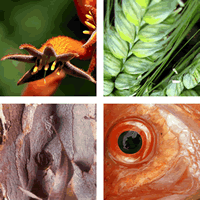Summary reports
The following information provides summaries of the completed projects funded through the Sheep and Goat Industry Funding Scheme Wild Dog Eradication Program.
Eastern Wheatbelt Biosecurity Group: Aerial and ground baiting program
This project augmented the wild dog baiting program that is undertaken each year in the eastern Wheatbelt by providing funding to bait in the extensive hard-to-access areas of the eastern Wheatbelt. Aerial and ground baiting was carried out east of the State Barrier Fence, in partnership with the Central Wheatbelt Biosecurity Association, to help reduce the wild dog pressure on the Fence. If young wild dogs can be controlled through a comprehensive baiting program before entering the agricultural areas, there is a reduced likelihood of stock losses.
Eastern Wheatbelt Biosecurity Group: Staffing succession
The project supported the development of the entry-level junior Licensed Pest Management Technician (LPMT), providing them with opportunities to develop critical skills and capabilities and increase the effectiveness of their work. This was important in helping make sure best practice declared pest management is applied on private and public lands. It also helped with LPMT succession, as it can be challenging to attract suitable people to work in remote locations.
Shire of Kent: Identifying and reducing the potential for wild dog attack on farm sheep within and adjacent to the Magenta Hub and Fitzgerald Hub
This project undertook wild dog monitoring and control interventions to reduce wild dog-related stock losses on sheep enterprises within and adjacent to the Magenta and Fitzgerald Hubs.
The project engaged an LPMT who undertook monitoring and control interventions between January and July 2020, and December 2020 to December 2021. The second phase of surveillance and control was targeted to high-risk areas, based on work carried out during the first phase. The project was augmented through baiting programs undertaken by the Department of Biodiversity, Conservation and Attractions as well as a selection of sheep farming properties.
In addition to the on-ground monitoring and control activities, the project a consultative process to be used to develop a Wild Dog Management Plan for the area and establish a farmer network.

